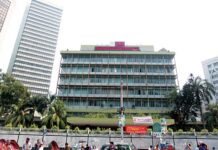Dr. ATM Emdad Hossain
Latex or natural rubber is collected from rubber tree (Hevea brasiliensis) through technical devices and manually and then processed for making rubber for industrial use. The latex is a gluey, chalky substance drawn off by making incisions into the bark and collecting the fluid in vessels in a process called “tapping”. The latex is then refined into rubber for commercial purposes.
In Bangladesh, its cultivation began in 1960 and then some expatriate specialists were deployed to set up rubber plantations. In the eighties a good number of officers and staff of Bangladesh Forest Industries Development Corporation (BFIDC) were sent to Malaysia for gathering experience. The present development at field and factory levels is the result of their experiences. Later on post-harvest operation of rubber plants’ wood has been brought under utilization by BFIDC and Bangladesh Forest Research Institute (BFRI) through collaborative work. Rubber cultivation is now an established industry with bright prospects for further employment generation.
Since 1960 to till date, 13209 ha or hectares [one ha is equivalent to 10,000 square metres or about 2.5 acres of land] have been brought under rubber cultivation by the BFIDC.
To pave way for nation’s need of rubber and export earnings the government took initiative to expand its cultivation in suitable areas. Chittagong Hill Tracts Development Board (CHTDB) started plantation in1980 and by this time planted more than 526 ha hilly land (production over 3500 ton) under tribal settlement project with participatory approach.
At the same time the government permitted raising plantations in Bandarban Hill District that expanded to Cox’s bazaar. Each stakeholder was provided with 10 ha of land. Presently in Bandarban under the 302 land holders about 13157 ha land is going to be developed, about 50 per cent of which is under production (production during 2012 was 8000 tons). They are expecting to harvest 60,000 tons during 2025-30. Besides these different tea estates have introduced rubber cultivation in fallow /degraded land in Sylhet, Chittagong and CHT. There dominating planters are Duncan Brothers (3036 ha), James Finley (2025 ha), Ragib Ali (486 ha), Ispahani (202 ha) and others. Without government support more than 50 planters are cultivating rubber with acquired knowledge from surrounding private planters in Bandarban district. At present about 40486 ha of land are under rubber cultivation. According to FAO, in Bangladesh within 2020 demand of rubber will be one lakh tons for which 1,50,000 acres of land will have to brought under cultivation. To serve the sector the present government has affiliated the Rubber Board and its headquarters will be in Chittagong. Rubber Research Cell will be in BFRI, Chittagong.
Socio-economic achievement of the sector
During 2012, 24,000 tons of rubber were produced in Bangladesh of which 60 per cent was used in local industries, the price of which is about Tk 334 crore. The rest of the rubber (9600 tons) was exported fetching Tk 220 core. Moreover, rubber-based industries of plastic, glue, tyre, tube, etc. have been developed in the country due to rubber production in Bangladesh. Many small scale latex factories have generated employment.
Presently tyres of bicycles and auto rickshaws are being exported. At present Bangladesh’s position as rubber producer is 4th in the world. Overall, plantations absorb carbon from environment for which the country can claim compensation from industrially developed countries, as per Kyoto Protocol of the United Nations Framework Convention for Clean Development Mechanism.
Recommended fertilizers
Research findings over the years have consistently stressed the importance of regular fertilizer dressings to both immature and mature rubber plants. Fertilizer application is essential at mature stage because with one kilogram of latex harvest (raw rubber) needs about 15g urea, 4g TSP and 10g Muriate of potash. On the other hand 10-30 per cent N and K is lost through percolating water which may increase in sandy soil during rainfall. Rubber plants require higher amount of urea (N) and TSP (P) in early growth and for girthing. Muriate of Potash (K) has many positive effects; it contributes to bark renewal, due to lack of bark renewal in mature stage latex yield increment is greatly decreased. In Bangladesh no work has been done. In the world as a whole during the last 45 years (1961- 2005) latex yield increased from less than 5500 to 11,000 kg/ha/yr but in Bangladesh that has been increased from 2000 to 6000 kg. So, to increase latex yield it needs HYV clone introduction, proper fertilizer doze application and management etc. Moreover, tree density, soil texture and nutrient status in soil and leaf including previous history of management should be taken into consideration.
Depending on findings of a research work a generalized method and time of fertilizer application for mature plantation of Bangladesh is recommended. That doze is as follows: Urea: 200-300g (2 splits), TSP: 160-200g and Potash: 200-250g (2 splits) per tree respectively. Periods of application are at the pre-monsoon and post monsoon.
Field observations
Delayed rehabilitation in new plantations (gap filling) by seedlings did not give fruitful results, because those seedlings are incompatible with the previously planted stands.
Rat problems from first to to 4th year are severe, which must be controlled.
Three categories of taper management in reduction of latex production in BFIDC plantations were done.
Indiscriminate fertilizer use in most plantations and method of application is improper too.
Some planters even tap latex every day violating the general norms which retard latex production and productive life of plantations.
Bark of mature tree is a premium to an owner of plantation but bark consumption by taper is very high in all plantations.
Plantations need supervision of specialists having scientific and technical expertise.
Strategic plan to boost production
* Knowledge sharing meeting on quality field management for latex yield increment.
* Taper should be brought under training to make them aware of quality tapping.
* Latex collection to sheet drying, etc., in every step quality should be maintained.
* Plantation development by quality grafted seedling.
* Statistics of plantations and area, including rubber yield should be compiled.
* List of rubber-based industries and national demand, export and import, etc be evaluated.
* Knowledge of organization, contribution of scientist, field experiences of managers should be compiled.
* Planters and Board Members linkage should be intensified.
* To boost latex quantity increment and quality development through management.
* To develop superior clone with priority of locally suitable one.
* To improve rubber wood utilization potentiality.
Suggestion
* The rubber research cell should be within recently affiliated Rubber Board.
* In separate identity it would be difficult for research cell to carry out work under BFRI.
* Immediate steps to be taken to make the Rubber Board functional.
* Alike Tea Board, marketing or export of rubber should be controlled by Rubber Board, if planters agree. VAT on rubber \ raw rubber and its products should be clarified.
———————————————————
The writer is former Divisional Officer (Soil), BFRI, ex-adviser of PHP Rubber Project and presently serving in the Rubber Project as Adviser of TK Group of Industries. Email: dr.emdadhossain@yahoo.com
Source: Weekly Holiday











When provenance trial was done, potential for introducing a tree species is confirmed. Now, in the context of environmental disaster, the natural product is much more environment friendly. As a result the demand has increased manifold. So a higher thrust is expected for rubber plantation in the hilly region